Leveraging Big Data and Analytics for Telecom Network Optimization
The telecommunication sector provides a vital source of communication for global consumers. But, with an increase in the number of users (smartphone, web, VoIP, users), the sector sees a heavy surge in the data flowing through its network.
Hence, telecom companies must make immense efforts to manage this increased flow of data. The use of big data analytics can help telecom companies optimize their network to improve the data being processed.
From managing the inflow to gaining profitability insights, big data analytics can help the telecom sector access opportunities for improvements and growth, which we’ll be highlighting in this article:

Key Takeaways:
- The global telecom sector is expected to spend more than $1.6 trillion by 2025 for services, infrastructure, etc.
- Telecom companies need big data for improving performance and reducing carbon footprint.
- Telecom companies can reduce customer losses by 15% through predictive analysis.
Big data in telecom or telecom analytics can help manage data silos efficiently.
Fundamentals of Telecom Network Optimization
Before we dive into exploring how big data can help with telecom network management, we need to understand the fundamentals of network optimization for telecom companies:
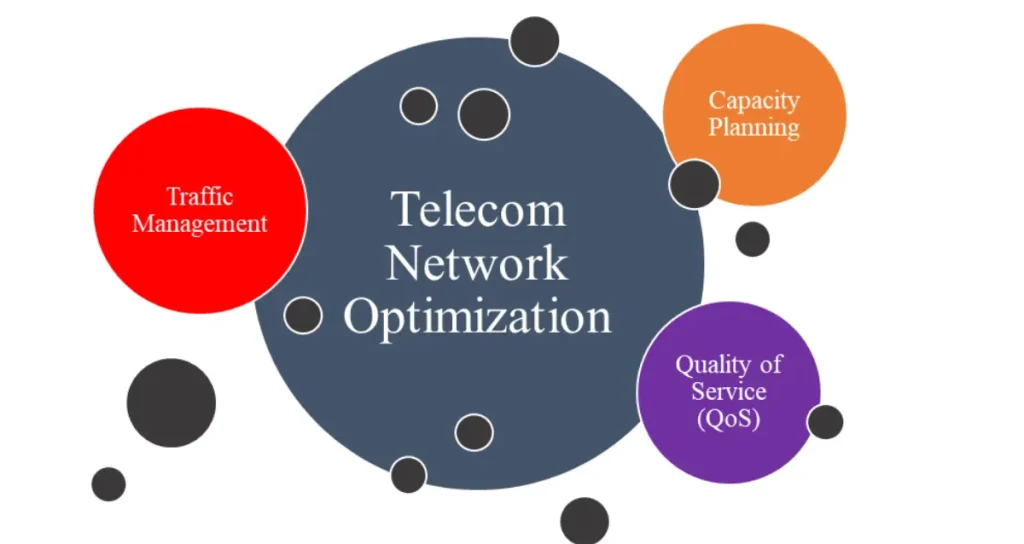
Traffic Management
The most important process in any network optimization is managing the traffic flowing through it. Managing the traffic helps avoid network issues, such as congestion, choking, and latency. The most common processes undergoing traffic management include:
- Data routing
- Traffic prioritization
- Bandwidth management and utilization
Capacity Planning
Apart from traffic management, operators need to manage the capacity of the network to safeguard the infrastructure. This includes predicting the increase in the traffic that will flow through the network in the future.
Using predictive analysis, the operators can estimate and plan for the capacity of the network. The new capacity level can handle the load and manage future demands without compromising on the quality of the services.
Quality of Service (QoS)
Quality of Service (QoS) is another crucial part of network optimization for telecom companies. This involves managing the network in a way that activities, such as streaming, Voice over Internet Protocol (VoIP), etc., remain unaffected.
Some of the common processes undertaken for ensuring QoS include:
- Latency control
- Jitter minimization
- Packet loss prevention
Fundamentals of Big Data Analytics
The understanding of big data analytics is as important as network optimization. By diving into the basics, we can understand how big data analytics helps increase efficiency for network optimization in telecom industries:
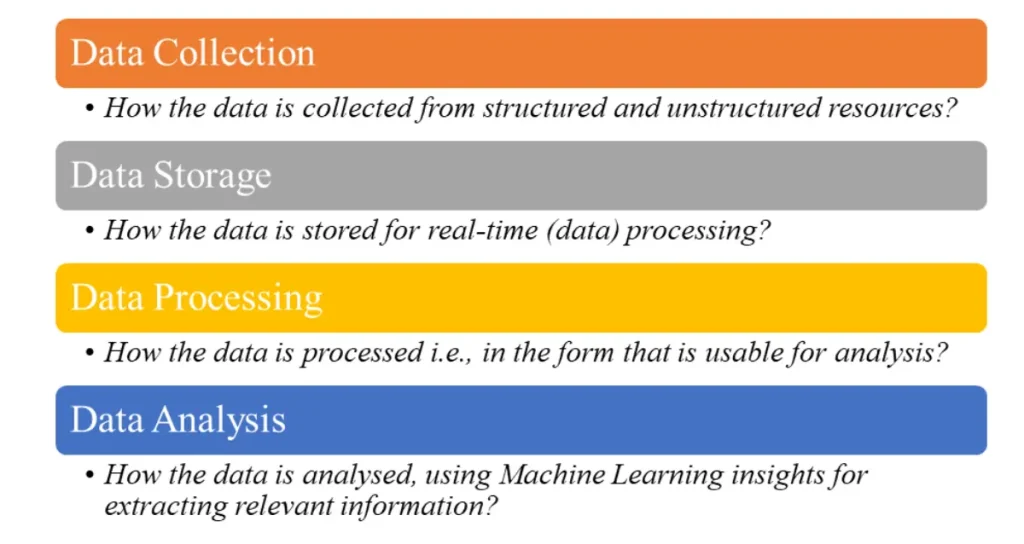
Each stage of big data analytics allows telecom operators to extract relevant information that can be used to achieve service and client-related information. The tools and labor used for this purpose need to be accurate in their workability to yield the desired output.
Telecom Analytics
For telecom companies, managing the inflow of data is highly important. Hence, every company needs to collect a significant amount of data in the form of insights, reports, equipment status, or through network performance analytics, keeping an eye on the operations.
Due to the lack of resources, this significant chunk of data remains unused or produces inaccurate results (faulty inputs, poor sampling issues, etc).
Telecom companies can use big data to analyze a bulk of data. It helps with:
- Interpreting the collected data
- Generating reports for predictive analysis
- Analyzing trends to make informed decisions
Challenges of Big Data Analytics in Telecom Network Optimization
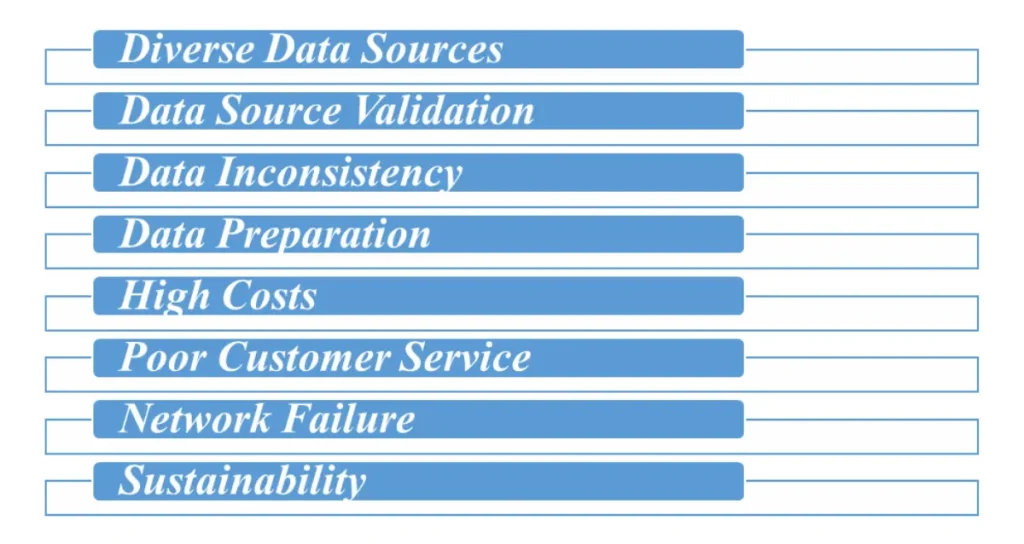
Diverse Data Sources
The first and foremost step in telecom analytics is the collection of data. However, since telecom companies collect a massive chunk of information, the challenge is to manage these multiple sources.
By multiple sources, it means that the data is present in multiple formats and has to be organized in a way that the analytics systems can work with it. To ensure this, companies need to organize and stay consistent with the type and format of the data collected.
Data Source Validation
Another particular challenge that is faced with telecom analytics is the validation of the data collected. Is the source trustworthy? Is the data collection method accurate? All such factors must be assessed by the analytics to ensure data validation.
In addition, teams must be prepared for handling data silos. Data silo is the collection of data that is not easily accessible for foreign users i.e., users from region/ dept./ team A doesn’t have access to the data from region/dept./ team B.
To validate the authenticity of the data source, the analysts must handle data silos. The challenge lies where the lack of source access results in incompatible data, bad formatting, inaccuracy, etc., and the teams have to start from scratch in their data collection process.
Data Inconsistency
Another particular issue faced during the data source validation is the inconsistency in the data. With data silos, the team can face issues of inconsistent readings, format changes, inaccurate missing values, etc.
All of these contribute to the inaccuracy of the entire analytical process, which results in flawed results evidently. The teams must use additional resources with more time consumption to achieve consistency in the data collected.
Data Preparation
For the data to be processed and analyzed, it must be prepared for analysis. This involves data cleaning so that any errors in the analysis process are mitigated. With a large amount of data, achieving accuracy gets problematic as every data set needs to be subjected to error-omission processes.
Management Issues
Apart from the above data-related challenges, here are some of the management challenges that telecom companies face when integrating bid data with network optimization:
High Costs
The foremost challenge is setting up the infrastructure to manage the analytics. From allocating resources to managing the equipment, handling repairs to ensuring compliance, all these require costing analysis to run effectively.
Poor Customer Service
While the company is making progress in integrating big data for analytical purposes, it has to ensure that any technical outages and glitches are mitigated. These cause poor service experience for the customers, which can lead to disloyalty and loss of clientele.
Network Failure
The implementation phase is crucial for any telecom company since it involves downtime. The downtime occurs when integration is in play, causing data processing delays. It can also result in equipment failure and can lead to instability in the network.
Sustainability
Companies need to minimize their carbon footprint. An estimate shows that the telecom sector can produce up to 8% of total carbon emissions by 2030, given the increase in the number of data centers deployed.
Hence, minimizing the carbon footprint is extremely important for the companies and a great challenge for the telecom companies.
Benefits of Big Data Analytics in Telecom Network Optimization
Although integrating big data analytics in telecom network optimization is difficult, it holds amazing benefits and can improve the overall performance of any telecom network.
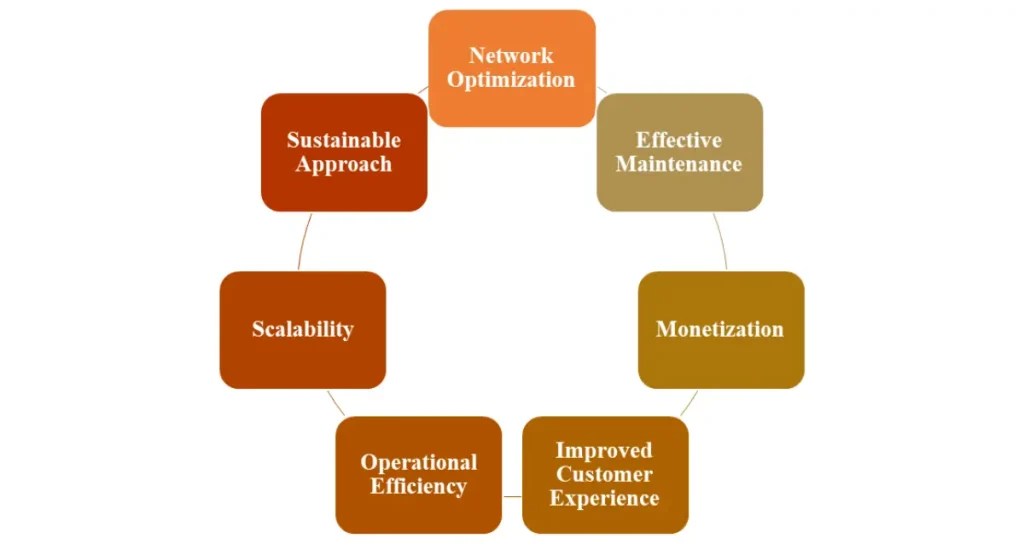
Network Optimization
Since optimizing the network is a priority, using big data, telecom companies can significantly improve their performance. This can be done by using big data analytics for:
- Managing the data flow through the equipment
- Minimizing network congestion
- Identify bottlenecks and optimize positional data flow
- Identify smooth data flow with load balancing
- Identify potentially overloaded nodes
Effective Maintenance
Issues, such as worn-out components, overloaded network nodes, network jittering, etc., can undermine the performance of the entire network. These result in the overall downgrading of the service quality offered to the customers.
Using big data analytics, telecom companies can predict potential maintenance through constant monitoring. By overseeing metrics, such as equipment status, load, packet loss, etc., the operators can detect anomalies that can lead to issues in the network.
In other words, operators can perform real-time analysis without having to offload any component; hence, minimizing service downtime.
Monetization
Keeping compliance with telecom data privacy and data-sharing, telecom companies can share the information that they’ve collected using big data analytics. This information can be sold to healthcare industries, IT companies, social sites (for commercial uses only), etc.
Improved Customer Experience
With better insights into the network’s performance, telecom companies can minimize issues and reduce downtimes. The service quality will improve proportionally, which would facilitate the consumers connected to the company.
For instance, a telecom company can gather information regarding service quality or outage in a given area. Using this information, it can improve its functionality, install better equipment, and upgrade the infrastructure to minimize outage instances and improve service quality.
Operational Efficiency
With network operations streamlined, telecom companies can better operational efficiency and improve service quality. Companies can gain insights into operational costs and reduce their overall expenses.
This is possible due to error detection with effective monitoring that helps keep dangers of sudden equipment or network collapses at bay. It also helps in creating a solid infrastructure that would support the growth of the network, accommodating more users.
Scalability
With better operational efficiency comes scalability. Once the current infrastructure is stable, the telecom companies can scale their options by taking up new technology to accommodate more users.
This would also help streamline integration processes for using green equipment or shifting towards eco-friendly options for operations.
Sustainable Approach
Achieving sustainable workability is one of the key goals of any organization, and for telecom companies, this is crucial. With effective operational abilities, telecom companies can scale up sustainably and use eco-friendly options.
In addition, companies can generate flexibility in their infrastructure to quickly adapt to market changes without any hassle. This reduces the overall costs of integrating new technology as well.
Big Data Analytics for Telecom Network Optimization – Case Studies
Several telecom companies have now adopted big data analytics to improve operational performance and provide their customers with improved and sustainable services:
Xfinity Smart Buildings Solution
Comcast Xfinity brings smart building solutions – a cloud-connected technology that allows energy monitoring and water detailing for an improved and sustainable experience.
The technology assists the users by:
- Collecting data on the utilities
- Detecting anomalies for preemptive maintenance
- Identifying consumption patterns
All of these perks are powered by solutions, which help keep users updated about their utilities in real-time. To know more about Xfinity Internet solutions, click here.
AT&T AI-Based IoTs
AT&T is leveraging big data to develop AI-enabled IoTs that will help consumers with effective network and device management. AT&T terms its IoT data integration as ‘Network AI,’ an AI assistant that will help the users manage their network, applications, and attached software.
The Network AI will:
- Assist users understand 5G ORAN (Open Radio Access Network) for improved cellular connectivity
- Assist global business users with enhanced internet services through AT&T Dedicated Internet White Box. The White Box will run 10x more traffic than the regular routers.
Frequently Asked Questions
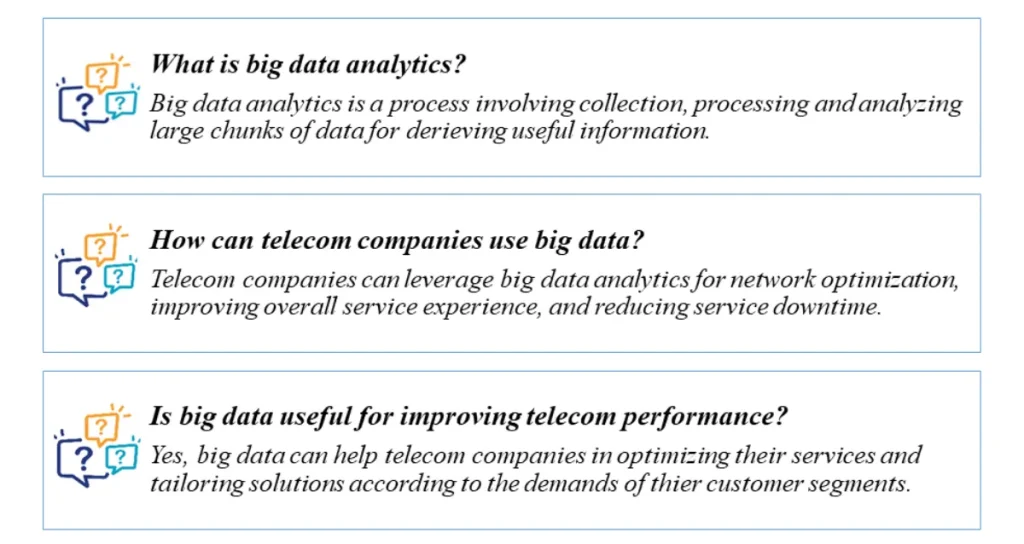
FURTHER READING
- Optimizing Network Throughput in Cloud Hosting: Amazon Lightsail vs. EC2
- Small Business Security: Essential Cybersecurity Tips






